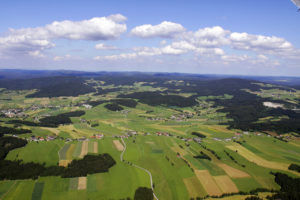Sustainable land development is something to consider in today’s world, where environmental concerns and resource conservation are a part of planning and construction. It involves practices that minimize environmental impact and ensure economic viability.
In this article, various examples of sustainable land development practices will be presented.
Green Building and Design
One of the cornerstones of sustainable land development is green building and design. This involves using energy-efficient building materials and technologies to reduce energy consumption and minimize environmental impact.
Examples include incorporating insulation, energy-efficient windows, and LED lighting. Passive design strategies, such as orienting buildings to maximize natural lighting and ventilation, also play a significant role in sustainable building practices.
Sustainable Site Planning
Sustainable site planning focuses on preserving natural features.
Techniques such as limiting grading and preserving trees and vegetation help maintain ecosystem integrity.
Low-impact development techniques, such as permeable pavements and rain gardens, are used for stormwater management to reduce runoff and prevent pollution.
Landscaping with native plants not only enhances biodiversity but also reduces water consumption and maintenance needs.
Energy Efficiency and Renewable Energy
Energy efficiency is a key aspect of sustainable land development.
Buildings can be designed to optimize energy usage through efficient heating, cooling, and lighting systems. Additionally, integrating renewable energy sources such as solar panels and wind turbines helps reduce reliance on fossil fuels.
Energy monitoring and management systems further enhance efficiency by optimizing resource usage and identifying areas for improvement.
Transportation Planning and Connectivity
Sustainable land development incorporates transportation planning that prioritizes pedestrian-friendly designs, including walkable streets, bike lanes, and public transit options.
Mixed-use developments that integrate residential, commercial, and recreational spaces reduce the need for long commutes and encourage alternative transportation modes.
Waste Management and Recycling
Effective waste management and recycling practices are integral to sustainable land development.
Construction projects can minimize waste through careful planning and recycling of materials.
Buildings can be designed with efficient waste management systems, including composting and recycling facilities, to reduce landfill waste.
Education and awareness programs promote sustainable practices among residents and tenants.
Conclusion
Sustainable land development encompasses a wide range of practices aimed at minimizing environmental impact and ensuring economic prosperity.
By incorporating green building and design, sustainable site planning, energy efficiency, transportation planning, and waste management into development projects, we can create resilient and environmentally-friendly communities. Developers and planners should consider sustainability in the land development design process to build more sustainable projects.



